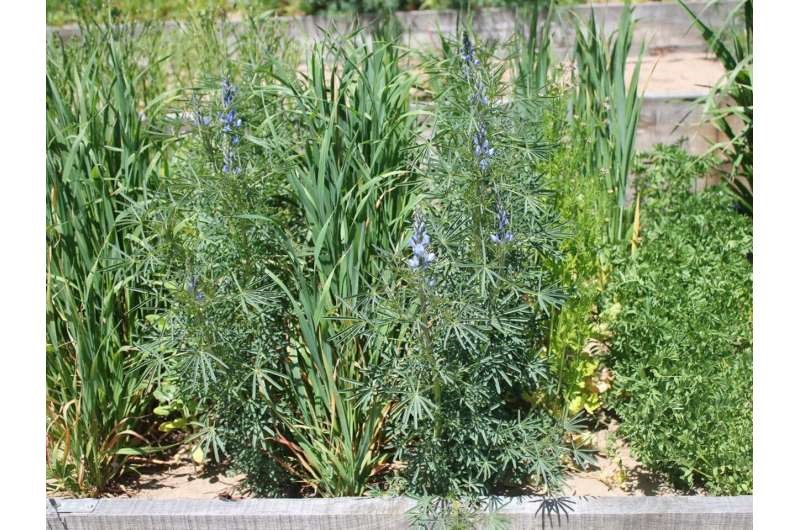Study: Intercropping produces higher yields than monocropping

Published: August 6, 2021
Category: Regenerative Agriculture
by Peter Rüegg, ETH Zurich
Monocultures dominate arable land today, with vast areas given over to single elite varieties that promise a high yield. But planting arable land with just one type of crop has its disadvantages: these areas are easy game for fungal and insect pests, posing a threat to crops. To keep pests at bay, farmers are having to use resistant varieties and various pesticides.
Intercropping or mixed cultures present a potential alternative to monocultures. Rather than having large expanses of land planted with just one species or variety, several species or varieties are sown alongside each other. However, as little research has been done into this method, especially from an agricultural perspective, mixed cultures are rare in arable farming.
A team led by ETH Zurich Professor Christian Schöb has now revealed that mixed cultures actually produce a much higher yield than monocultures in arable farming. Their study was recently published in the journal Nature Plants.
Applying an ecological principle
Mixed cultures draw on the ecological principle that ecosystems are able to perform their functions more effectively where there is greater biodiversity. These functions include regulating water balance, maintaining soil fertility and increasing plant productivity.
This also goes for agricultural ecosystems: “Research into agriculturally used meadows has shown that areas with a larger mix of plants are more productive than those with just one or a few species,” Schöb says.
Until now, barely any comparable studies had focused on arable farming. That is why, together with his colleagues, Schöb set out to investigate whether this basic ecological mechanism would also have a bearing on arable land, specifically with regard to yield.
The researchers created two test gardens: one in Switzerland, on the University of Zurich’s Irchel campus, and the other in the Spanish province of Extremadura. The latter has a much drier and warmer climate than Zurich, allowing the researchers to examine how the crops grow under potential future climate conditions.
Greater yield from mixing just two crops
In their experiment, the researchers tested mixtures of two or four different crops chosen from eight selected species comprising wheat, oat, quinoa, lentil, lupin, flax, and false flax (an oilseed similar to rapeseed) as well as coriander. Only the seeds of the different species were used. The plants were sown 12 centimeters apart in alternating, parallel rows.
The researchers compared the seed mass from the mixed-culture crops with those from monocultures. They also measured plants’ biomass based on their growth above ground.
The result speaks for itself: compared to monoculture farming, even a mixture of two species increased yield by 3 percent in Spain and 21 percent in Switzerland. Where the researchers had sown four species alongside each other, the yield increase was as high as 13 and 44 percent in Spain and Switzerland respectively.
The researchers explained that this additional yield primarily comes down to the biodiversity effect: a greater variety of plants results in a better use of available resources and more effective, natural pest control—the experiments were conducted without pesticides.
A change in agricultural practice is, however, required if mixed cultures are to gain ground. Among other things, machines need to be able to harvest different crops at the same time and also separate the different harvest products. “These machines exist, but they are few and far between, not to mention expensive. There is simply too little demand for them at present,” Schöb says. Together with optimized seeds and the right machines, mixed cultures will present farmers with a real opportunity for the future.
Source: PHYS.org
To view source article, visit:
https://phys.org/news/2021-06-cultures-greater-yield.html?
Organic & Non-GMO Insights August 2021








